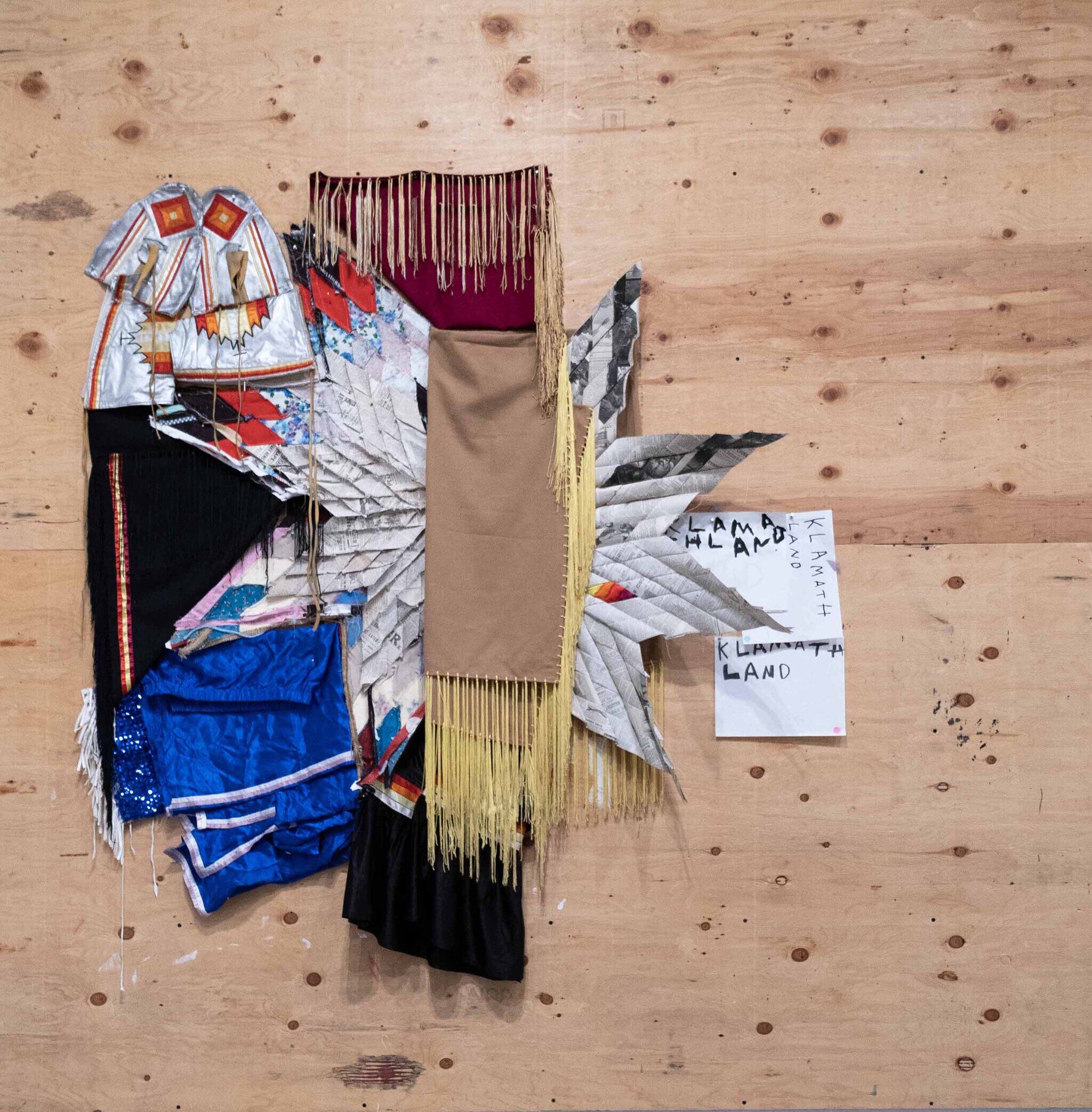Natalie Ball: bilwi naats Ga’niipci | Art & Artists
Nov 17, 2023–Feb 19, 2024
Natalie Ball: bilwi naats Ga’niipci | Art & Artists
Dance Me Outside, 2009/2023
1
The elements in Dance Me Outside resemble clothes and blankets loosely arranged as if just before or after use—“ready and unready,” as the artist puts it. To make this work, Ball gathered what she calls “outside” clothes; garments worn by herself and others; and other textiles she associates with both her rural and urban communities. She also borrowed from her own work by repurposing two star quilts from an earlier sculpture. Layering on top of the often-reused quilts, the artist continued the pattern with nineteenth-century newspaper reports on the Modoc War (1872–73), which resulted in the US Army’s forced displacement of many Modoc people from their homelands to what is now Oklahoma.
As Ball cut apart and hand-stitched together the accounts, including articles about violent battles and the execution of Modoc leaders, occasional tears occurred in the fragile paper. The written stories became illegible, and through this process she worked to “push past the reliving of trauma.” With the accumulation of materials in this sculpture, the artist offers an invitation. Through her art, she wants viewers “to come with me, to try this on, to be there.”

